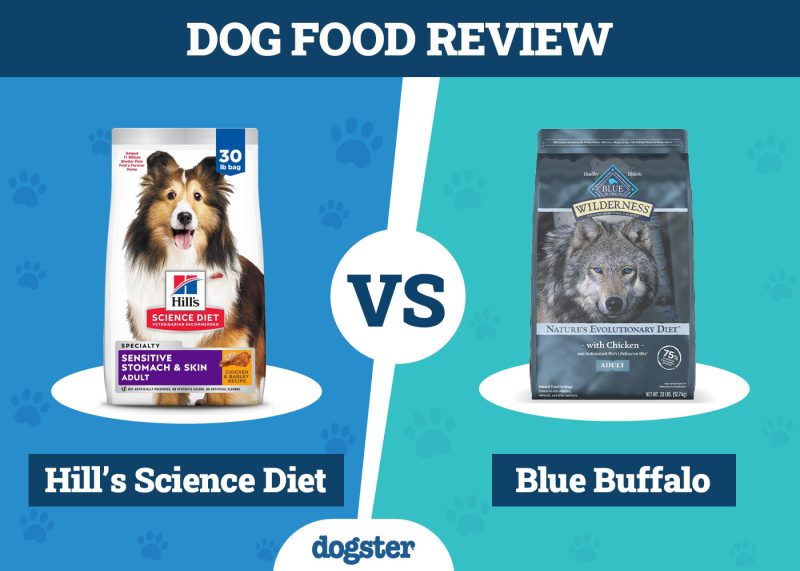In this article
We all want what’s best for our pets, and one thing readily within our control is their diet. You’re probably familiar with some diets people consume: grain-free, paleo, and so many more. One that’s starting to take center stage is the clean eating movement. Let’s look at this diet and see if it has any benefits for our pups.

What Is the Clean Eating Movement?
According to Harvard Medical School1, clean eating focuses on several critical components for people:
- Eat whole foods
- Eat foods that are less processed
- Use high-quality protein sources
- Read the labels of your packaged foods, looking for short lists of ingredients


The 3 Steps to Understanding Clean Eating for Dogs
1. Clean Eating Applied to Dogs
Have you ever read your dog’s food label? It can be an eye-opening experience. How many of those ingredients are practically unpronounceable? The aim of the “Clean Eating Movement” is for people to know what exactly is in their dog’s pet food.
Some of the hallmarks of clean eating for dogs include:
- Humanely raised protein sources
- Single-source proteins
- Whole fruits and vegetables
Remember that words like “clean” and “natural” are not regulated industry terms. These words are more used for marketing purposes, so you’ll need to do your due diligence when analyzing the food you’re feeding.
Understanding Your Dog’s Food Label
Your dog’s meal should be complete and balanced regardless of what you’re feeding. You should check the label for an AAFCO statement. The Association of American Feed Control Officials sets standards for animal feeds. They don’t directly test the products but set nutrient standards and guidelines.
Your pet food company should formulate its diets to meet the standards set forth by AAFCO. You’ll look for a statement that indicates the food is “complete and balanced” for a particular life stage. The label should indicate that it is for supplemental feeding if it is not balanced. The food company may use laboratory analysis or a feeding trial to ensure the diet is appropriate. Every pet is unique in their nutritional needs, so we recommend reaching out to a vet for nutritional advice.
If you need to speak with a vet but can't get to one, head over to PangoVet. It's our online service where you can talk to a vet online and get the personalized advice you need for your pet — all at an affordable price!

Human-Grade Dog Food
The Food and Drug Administration doesn’t set guidelines for terms like human-grade, but AAFCO does. To make the claim that the pet food is human-grade, the company must:
- Make sure that each ingredient used is fit for human consumption
- Have the facility licensed to make foods you can eat
Human-grade food isn’t necessarily better than feed-grade pet foods. You’ll need to consider the other benefits the food offers.
2. Benefits of Clean Eating
Clean eating should limit the number of ingredients your dog is consuming. This feature is especially important for dogs that have food allergies or sensitivities.
Choosing dog food also helps minimize the risk of food additives. Over the years, some animal feeds have had residues such as pentobarbital, a euthanasia drug. These foods are generally recalled, but the fact of the matter is that avoiding them is clearly safer for our pets.
Clean eating can also align with your ideals. In addition to wholesome foods, we can look for sources where the protein sources are ethically farmed, and animals are treated humanely. While cats cannot subsist on a vegetarian diet due to being obligate carnivores, studies have shown that as long as the diet is formulated to meet all nutrient needs, dogs can eat a vegetarian diet.
3. Limits of Clean Eating for Dogs

While one of the hallmarks of the “Clean Eating Movement” is unprocessed foods, some of our dogs need highly processed diets. For example, for many dogs with food allergies, feeding just a limited-ingredient diet isn’t enough. They need a hydrolyzed protein diet. However, you can ensure your dog’s food is made with high-quality protein sources.
Many people have grain allergies and assume that dogs do, too. While some dogs have grain sensitivities, many don’t. Feeding a grain-free diet has even been dangerous for some dogs. It has been linked to a heart condition known as dilated cardiomyopathy.

Important Considerations
One way that we can provide our dogs with clean meals is to prepare them ourselves. Home-cooked meals do have limitations, and you’ll want to make sure that the meals are complete and balanced. The best way to ensure the meals you prepare are meeting your dog’s nutrient needs is to have a diet formulated by a nutritionist. A handy tool that some utilize is balance.it, which can prepare meal suggestions for your dog based on ingredients you input.
As with any food, you should transition your dog gradually to a new diet. Also, inform a veterinarian about what you feed and the quantities so that they can help you make sure your dog is getting its calorie needs met (or limited if they are overweight).

Final Thoughts
The “Clean Eating Movement” still has a way to go for our dogs, but it’s a great start to help provide our dogs with healthier foods to support a long and healthy life. Work with a veterinarian to determine the best dog food option for your particular pet’s circumstances and underlying health conditions.
Featured Image Credit: Switlana Sonyashna, Shutterstock


















